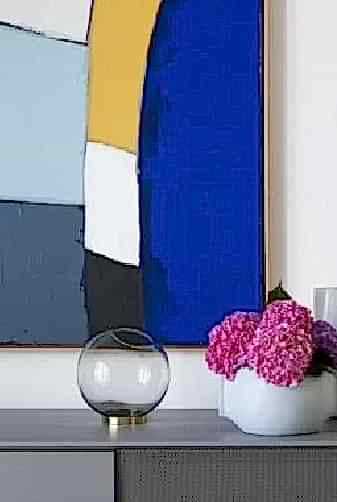When it comes to interior design, there are various styles and aesthetics that one can incorporate into their space. One such style is industrial interior design, which has gained popularity in recent years. The industrial aesthetic is all about showcasing raw and unfinished materials, creating a sleek yet edgy look.
To achieve this aesthetic, one must carefully consider the elements that make up industrial interior design. In this blog, we will discuss guidelines for achieving an industrial aesthetic and how commercial and residential interior designers can incorporate this style into their projects.
The Elements of Industrial Interior Design
The key to achieving an industrial aesthetic is understanding the essential elements that make up this style. Here are some elements you should consider when designing an industrial space:
Materials
Raw and unfinished materials are the backbone of industrial interior design. Exposed brick walls, concrete floors, and exposed pipes are some common materials used in this style. These elements add a sense of authenticity to the space, showcasing its history and character.
When selecting materials for your project, opt for items that have visible imperfections such as rust, cracks, or patina. These imperfections add to the overall industrial aesthetic.
Colour Palette
The colour palette for industrial interior design is typically muted and neutral. Black, grey, white, and earth tones are commonly used to create a cohesive look. These colours allow the raw materials to take centre stage while adding depth and texture to the space.
However, this doesn’t mean you can’t incorporate pops of colour. Adding a bold statement piece or artwork can add interest and break up the neutral palette.
Furniture
When it comes to furniture, industrial interior design is all about functionality and simplicity. Look for pieces made from metal, wood, or leather with clean lines and minimal ornamentation. Vintage or distressed items are also commonly used in this style.
To add an industrial touch, consider incorporating furniture with wheels or exposed hardware. These details will further enhance the raw and unfinished look of the space.
Lighting
Lighting is a crucial element in any interior design, and industrial spaces are no exception. Industrial lighting fixtures often feature metal, weathered finishes, and exposed bulbs. Pendant lights, floor lamps, and wall sconces are all popular choices for industrial spaces.
Remember to incorporate a mix of ambient, task, and accent lighting to create a balanced and functional space.
Guidelines for Achieving an Industrial Aesthetic
Now that we have covered the essential elements of industrial interior design let’s discuss some guidelines for achieving this aesthetic:
Balance Old and New
To achieve an industrial aesthetic, it’s essential to balance old and new elements. Incorporate modern pieces with vintage or distressed items to add character and interest to the space.
For example, you can pair a sleek leather sofa with a rustic coffee table made from reclaimed wood. This juxtaposition of styles will create a unique and cohesive look.
Embrace Imperfections
As mentioned earlier, imperfections are a crucial element of industrial interior design. Instead of trying to hide them, embrace imperfections and use them to add character to your space.
For instance, if you have exposed pipes or ductwork, leave them as they are instead of covering them up. These elements add an industrial touch and tell a story about the building’s history.
Incorporate Textures
In addition to materials, incorporating different textures is another way to add depth and interest to an industrial space. Mix and match textures such as rough brick walls, smooth concrete floors, and plush leather furniture.
Don’t be afraid to experiment with different textures; they will add dimension and create a visually appealing space.
How Commercial Interior Designers Can Incorporate the Industrial Aesthetic
Commercial interior designers in Melbourne can use industrial interior design to create unique and functional spaces for their clients. Here are some ways they can incorporate this style into their projects:
- Opt for open ceilings with exposed ductwork, pipes, and beams to create an industrial look.
- Use raw materials such as reclaimed wood or metal in furniture, flooring, or accent pieces.
- Incorporate industrial lighting fixtures to add an edgy touch to the space.
How Residential Interior Designers Can Incorporate the Industrial Aesthetic
Residential interior designers in Melbourne can also use industrial interior design to create stylish and functional homes for their clients. Here are some tips for incorporating this style into residential spaces:
- Use exposed brick walls, concrete floors, or metal accents in the kitchen or living room to create an industrial look.
- Incorporate vintage or distressed furniture pieces, such as a metal bed frame or leather sofa, to add character and interest.
- Create a focal point in the space with an eye-catching industrial lighting fixture, such as a chandelier made from pipes or a pendant light with exposed bulbs.
Conclusion
In conclusion, achieving an industrial aesthetic requires careful consideration of materials, colours, furniture, and lighting. By following the guidelines mentioned in this blog, both commercial and residential interior designers can successfully incorporate this style into their projects. Remember to balance old and new elements, embrace imperfections, and incorporate textures to create a cohesive industrial look. With these tips in mind, you’ll be well on your way to creating stunning industrial spaces. So, go ahead and let your inner industrial designer shine! Have fun creating unique and functional spaces with an edgy and authentic feel.


